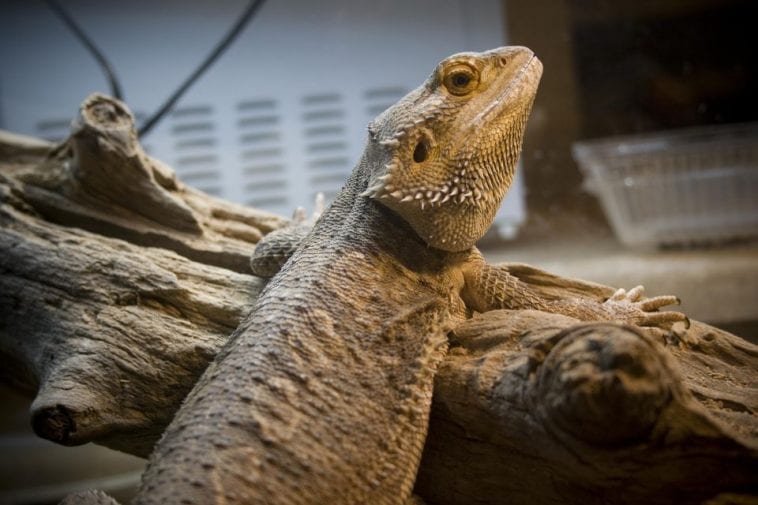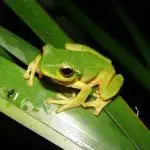Exotic pets such as lizards are some of the most popular ones you can find in the exotic pet trade. But because they are deemed as exotic pets, you can just assume that lizards have different demands when compared to other types of pets (such as dogs, cats, and birds) that are common in most households. This includes the type of food they eat and, of course, the environmental conditions in the habitat you will be providing for them.
Since lizards are cold-blooded animals who need to rely on the light and the heat of the sun to not only stay warm but to also get their much-needed vitamin D, it only follows that the one thing you should provide these pets when you are setting up a habitat for them is proper lighting. If you are able to provide a good source of light as well as enough warmth for your pet lizard, you will notice how happy and healthy your reptile will become.
Here is a guide you might find useful if you are looking to set up the proper lighting for your pet lizard’s habitat:
Why are light and heat important for your lizard?
As mentioned, lizards and other reptiles are cold-blooded animals that require light and heat from an external source to keep their bodies warm. In this case, what they use to regulate their body temperatures is the light and heat they get from the sun. That is why, in the wild, you often see lizards and reptiles moving to places where they can get their much-needed heat and light. They are often found in areas that are warm and easily exposed to direct sunlight as opposed to the colder northern regions.
In that case, we cannot overstate how important it is for you to provide a light and heat source for your pet lizard. Of course, a temperature gradient must also be provided so that there are different temperatures in its habitat and so that the reptile will be able to choose the temperature it needs during certain situations and periods of time. Most people provide their lizard with both light and heat by using proper lighting. That is why it is essential that you know how to set up the proper kind of lighting for your pet lizard’s habitat.
Different kinds of light needed by your lizard
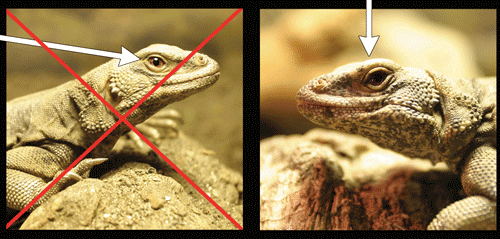
If you remember your basic high school science, you would know that there are different types of light in the light spectrum. The rightmost is the infrared light, and the leftmost is the ultraviolet light. In between those two lights is visible light, which is the type of light that allows us to perceive colors. It is important to note that the types of light with short wavelengths can be dangerous to your lizard. This includes UVC and short-wavelength UVB lights, which the atmosphere naturally blocks. As such, only lights that resemble what the lizard naturally gets from the sunlight that passes through the atmosphere is what you should provide for your reptile.
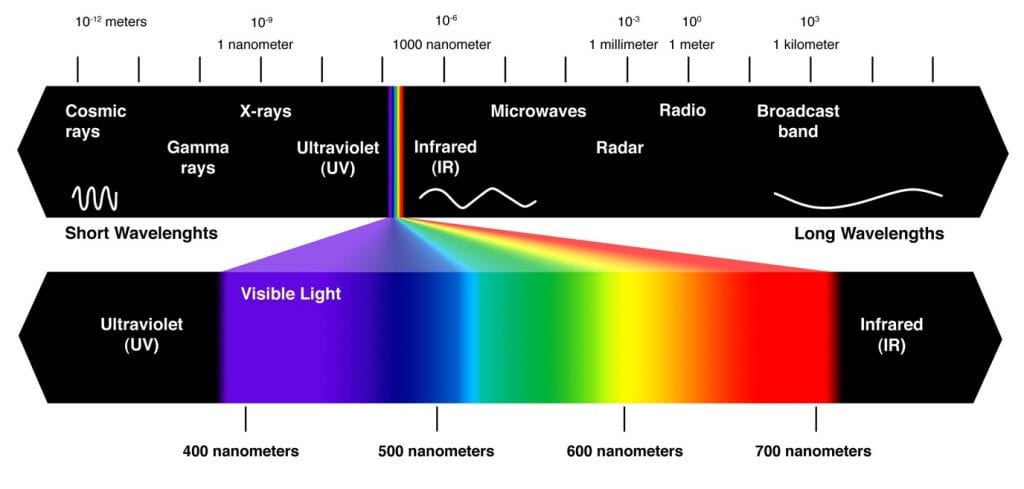
· Infrared light
Infrared light is the type of light that contains the sun’s warmth. Simply stated, this is the type of light that provides the majority of the warmth that your pet lizard should get from the lighting that you will be setting up for it. Lizards absorb infrared light through their skin and will help with their digestion. That is why reptiles that have just finished a large meal usually stay under the warmth of the sun to bask and absorb infrared light through their skin.
In your case, what you need to do is to provide a good light source that emits infrared light so that your lizard’s habitat will not only have a reliable source of light and heat but also so that your pet lizard will have a spot it can bask under it. There are different types of light sources that emit infrared lights. You can choose from ceramic heaters, heat mats, and incandescent lamps (which emit both infrared and visible light). A lot of lizard owners prefer incandescent lamps because of how they not only emit infrared rays but also provide the visible light that can light up the entire habitat.
· Visible light
Visible light, which includes UVA, is very important to your pet lizards depending on the type of reptile you have. That is because most species of lizards are able to perceive a wider spectrum of colors than humans can. This allows them to be able to hunt for prey in the wild or use it to recognize other lizards of the same species and also food. That is why most owners prefer to use a lighting source that can provide both infrared rays and visible light instead of just simply light sources that provide one or the other. As mentioned, incandescent lamps provide infrared rays as well as visible light.
· UVB light
The UVB that the lizard gets from direct sunlight has a lot of benefits to the reptile’s overall health. This is also one of the reasons why reptiles like basking under the sun whenever they had just eaten. UVB light improves the lizard’s immune system while also helping in how the skin synthesizes vitamin D3, which is what is essential for the lizard to metabolize calcium better and develop stronger and healthier bones while also balancing its phosphorus levels as against its calcium levels.
Vitamin D3 synthesis in lizards works by using the UVB light to use the cholesterol it has in its skin to convert it into vitamin D3. The reason why UVB light is much better for lizards than an actual vitamin D supplement is that this vitamin can be toxic to reptiles in large amounts and can be a bit difficult to monitor when you are using supplements. Meanwhile, the lizard’s skin only produces the right amount for vitamin D3 so that it will only synthesize whatever its body needs instead of generating too much to the point that the vitamin D3 reaches toxic levels.
Temperature gradient

As previously stated, it is important for you to provide a temperature gradient inside your lizard’s enclosure so that there will be different temperatures coming from different light sources inside the habitat. This will not only allow your reptile to choose a spot where it feels that the temperature is right for it depending on the situation, but it also allows it to be able to get different types of lights from all of the light sources inside the enclosure.
When providing a temperature gradient, you should keep a basking light or a heat lamp on one side of the enclosure so that the lizard will have a place where it can bask under. This part of the reptile habitat should be the warmest portion as it is directly exposed under the warmth of the heat lamp. Meanwhile, the other end should be a lot cooler than the basking area, but you can still provide a heat source in such spots in case the outside temperatures get too cold.
Another way for you to provide a temperature gradient is to provide hiding spots for your lizard if it is the type that likes to hide. The shelter or the hiding spots should be present in both the warm and the cool ends of the habitat to give your reptile a wider range of choices. And if your lizard is arboreal, there should be different types of temperatures in the spots where it can climb on such as branches and large leaves.
Light and heat sources
When you are looking for light and heat sources to place inside your reptile’s enclosure, always keep in mind that you should very well use at least two types of light sources because there is no single type of light that can provide the full spectrum that sunlight has. As such, the key here is to know the types of light sources to use and where to place them.
First off, a heat lamp such as an incandescent bulb should be provided in the lizard’s basking spot, which should be the warmest end of the entire enclosure. An incandescent bulb not only provides infrared rays that emit a warmth similar to the type your lizard gets from the sun, but it also provides visible light. However, you can also use other types of lights that provide infrared rays. These can be heating pads or ceramic heaters.
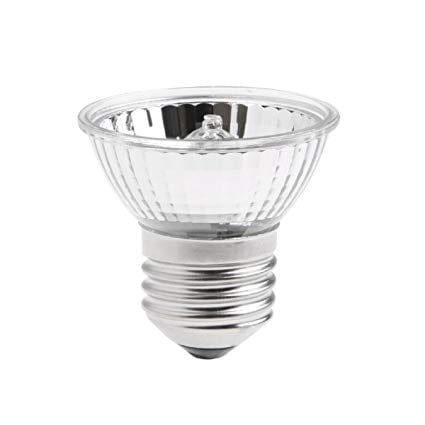
Second, a UVB lamp is important because we have already stated above that UV light is essential for vitamin D3 synthesis and calcium metabolism in lizards. As such, there is a need to place a full-spectrum ultraviolet lamp that is 1.1% UVB inside the enclosure and not outside because glass can block UV rays. It is also highly important that you place both the UVB lamp and the heat lamp on the same side of the enclosure so that it will get the benefits of UV lights and infrared rays whenever it is basking on that side. If you placed the UVB lamp far away from the basking spot, your reptile wouldn’t be able to absorb the UV rays whenever it is spending most of its time basking.

